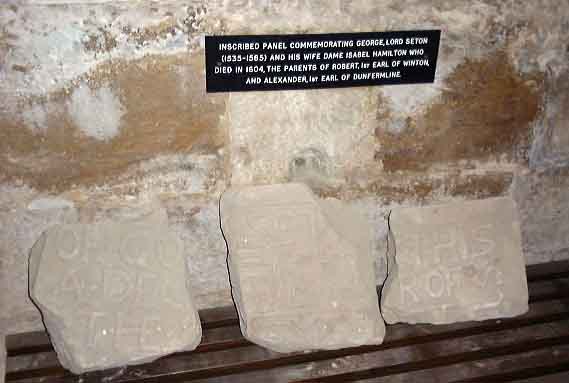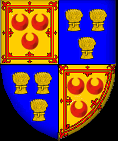| |
|
Seton
Family Monumental Inscriptions |


1596. - CONSTABLE OF THE PALACE, and Heritable Bailie
of the Lordship of
Dunfermline. - Queen Anne, Lady Dunfermline, with the consent and authority
of the King and her Majesty's counsellors, granted a Charter to Lord Seton,
Lord President of the Court of Session (afterwards Earl of Dunfermline),
appointing him and his heirs-male, "Heritable Bailies of the Lordship of
Dunfermline," and "undoubted and irrevocable Keepers, Guardians, or
Constables of the Palace of Dunfermline, and edifices adjacent." This
Charter is dated "15th February, 1596," and was ratified by Parliament in
1606. On a marble monument of the Seton family, in Seton Church, Tranent,
are the
words, "Fermelinodvnum Comes et Regni Scotiae factus est Cancellarius," in
allusion to the first Earl of Dunfermline and his status. In 1821,
while repairs were being made in Dalgety Church, Fifeshire, a closed vault
was discovered, in which were six coffins; one of these, from the
inscription on it, contained the remains of the Earl - viz., "Alexander
Setonius, Fermelinoduni Comes, Scotiae Cancellarius," &c. (See Annals, date
1622.) On an old tombstone, erected by Rev. Ralph Erskine in 1728,
now removed, were "Mag. Radalphus Erskine, Pastor Fermilo-dunensis," &c.,
which comes from the same root as the above. Civitatis Fermiloduni and
Civitatis Dunfermlinensis are equivalents, differing only in the
arrangement of the syllable.
(See An. Dunf. date 1670.) | |
 |
 |
George, 7th Lord Seton's Epitaph

Alexander Seton, 1st Earl of
Dunfermline

The Seton's of Northrig

Sir Chrystell's Chapel
The Seton's of Barnes
David Seton of Tranent
George Seton of Tranent
|
